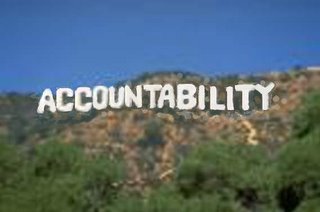Pueblo and its Peak
| I typically don't write up three blog posts in a day, but as I turned to the pages of the New York Times after my last post, I came across an article that requires comment and attention. First, a caveat for the sake of domestic peace and tranquility. I am not claiming, nor would I ever claim, to be a native coloradan. I was born and raised (until age 15) on the east coast, mainly in Brooklyn with stops in Newark and suburban Philly along the way. That said, I regard Pueblo, Colorado as my home town. I graduated from high school there, attended and graduated from what was then Southern Colorado State College (now Colorado State University at Pueblo), and even while attending graduate school in lovely Boulder, I still thought of Pueblo as home when I thought about such things. And I still do. [If you want to know why that statement was necessary, you will have to understand that my spouse is a native Coloradan - a native Pueblan (sic) -- whose mother was born and raised there and who would probably and proudly apply a "Colorado Native" bumper sticker to our cars if she could. Like other such natives (not to be confused with Native Americans, who probably feel the same way about her type), especially given the Texas-ifcation and Californ-ication, she is sensitive to any claims of native-hood on the part of carpetbaggers like my family and me.... Some people just never get over such things....] OK, with all that out of the way, the Times article in question focuses on the efforts of Pueblo to reinvent itself as a tourist stop for the many folks who typically avoid anything south of Colorado Springs. Pueblo was a working, blue collar town, populated by ethnics of every types who worked the steel mill, railroads and mines in that part of the sate. When I moved to Pueblo in 1962, it proudly called itself the "Pittsburgh of the west" and was a Democratic stronghold in a state that had always had a progressive political streak. It was regarded as a "tough" town (as the article notes) -- so much so, that folks in other parts of the state thought of it as filled with hoodlums and all sorts of rabble.... In fact, it was a really nice city, at the time the second biggest in the state (about 110,000 population, while Colorado Springs was just in the 80,000 area), and perhaps the most diverse in that part of the country. I went to South High, while Randi attended Central (two of the six high schools, if you count Catholic and County Highs), and there was then (and in hindsight) a terrific place to experience adolescence. Neither of us have close family living there now, although there are plenty of friends and memories.... One such memory I had was of this historical site located at the side of a hill just south of downtown. Pretty obscure location, and if it wasn't for the little roadsign indicating a historical marker you would not even know it was worth the stop. (In fact, I don't recall anyone but me making the stop.) As it turns out, it was a marker to designate the site of the Pike encampment discussed in the Times piece. By distance this was a pretty long way from the Peak that would carry Pike's name, and the story I heard was that he thought it was a small hill and ordered a couple of his folks to climb it and see what was on the other side. (Pueblo, you see, is not a picture postcard part of Colorado. It is located in the high plains, and you have to look pretty far out on the horizon to the west to see anything resembling mountains. In fact, you are more likely to see the twin Spanish Peaks to the southwest from Pike's encampment than the range to the north that include Pike's Peak. ) Thanks to the internet, my misconceptions are now corrected, and here, at length, is the relevant piece of history that starts on November 23, 1806, after they had spotted the mountain (for the entire background history, click here): In the middle of what is todayÂs city of Pueblo the expedition built a defensive stockade of logs. From this base camp, a small party would make the ascent, while the rest would remain to guard the horses and supplies. Pike, fooled by the optical illusions of distances on the western plains, estimated that the march to the base of the mountain and its ascent could be accomplished in two days. I think the idea of using the Pike encampment as a tourist hook is billiant, for Pueblo has never really recovered from the economic blows it took in the 1960s and 1970s. So just as I say to folks who have never bothered to head north from Dublin to see Northern Ireland, so I say to you visitors to Colorado: take a trek south and visit Pueblo.... Tags: |



Comments on "Pueblo and its Peak"
post a comment